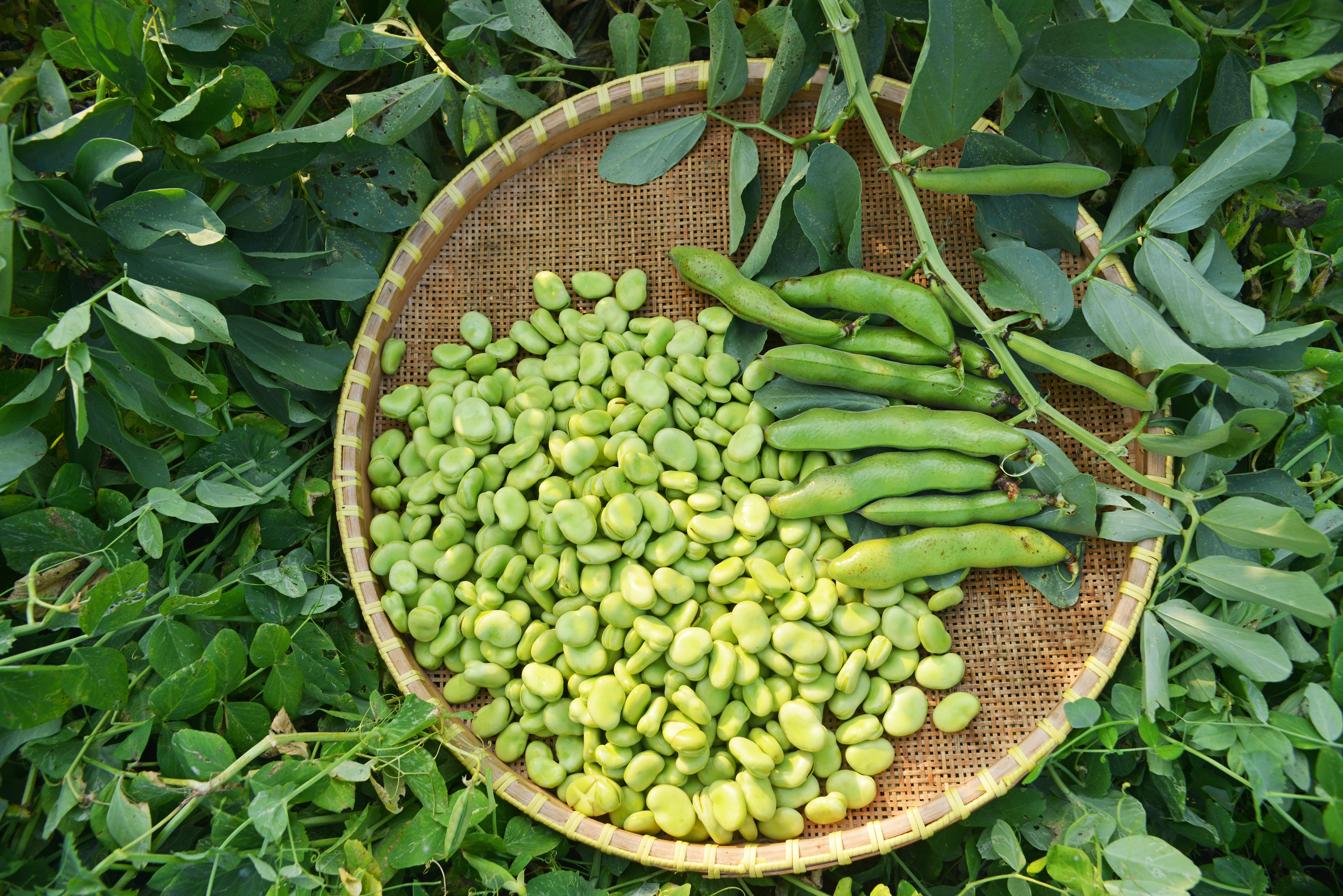Fava Bean
Also known as faba bean, horse bean, and broad bean. Fava beans are a type pf legume. They are the seeds that come from a pod. Compared to other types of fresh beans, fava beans are somewhat flat in shape.

More on Fava Bean
Growing
Fava beans are cultivated all over the world. In Soutehrn Alberta, they are grown in hot houses for commercial and retail use.
Source: The Secrets of the Seed: Vegetables, Fruits and Nuts by Barbara Friedlander p 8
Toxicity
Broad beans contain favism which affects certain people with that allergy. In particular those of Mediterranean or Iranian descent. The sensitivity is genetic and can lead to anemia.
History
The Egyptians and the Greeks ate fava beans ate fava beans since the Bronze Age. (Larousse Gastronomique p 172).
Ways to Cook
Fava beans are a wonderfully fresh bean that is best in savoury preparations using fresh herbs, alliums, citrus, and cheese or other dairy like yoghurt. The larger beans should be shelled from the pod, then remove the skins from the outside of the beans. The inside flesh is bright green and tender. They can be blanched, sautéed or stewed. Cooked and chilled for use in cold dishes is also an option. In Italy, fava beans are eaten raw at the end of a meal and alongside Pecorino cheese.
Fava beans can be used in:
- salads
- dips
- soups
- stews
- pastas
- casseroles
Some other well-loved preparations include:
- in succotash
- sautéed and mixed with other types of beans
- served with pork dishes
Butter beans or lima beans are often used in place of fava beans.
